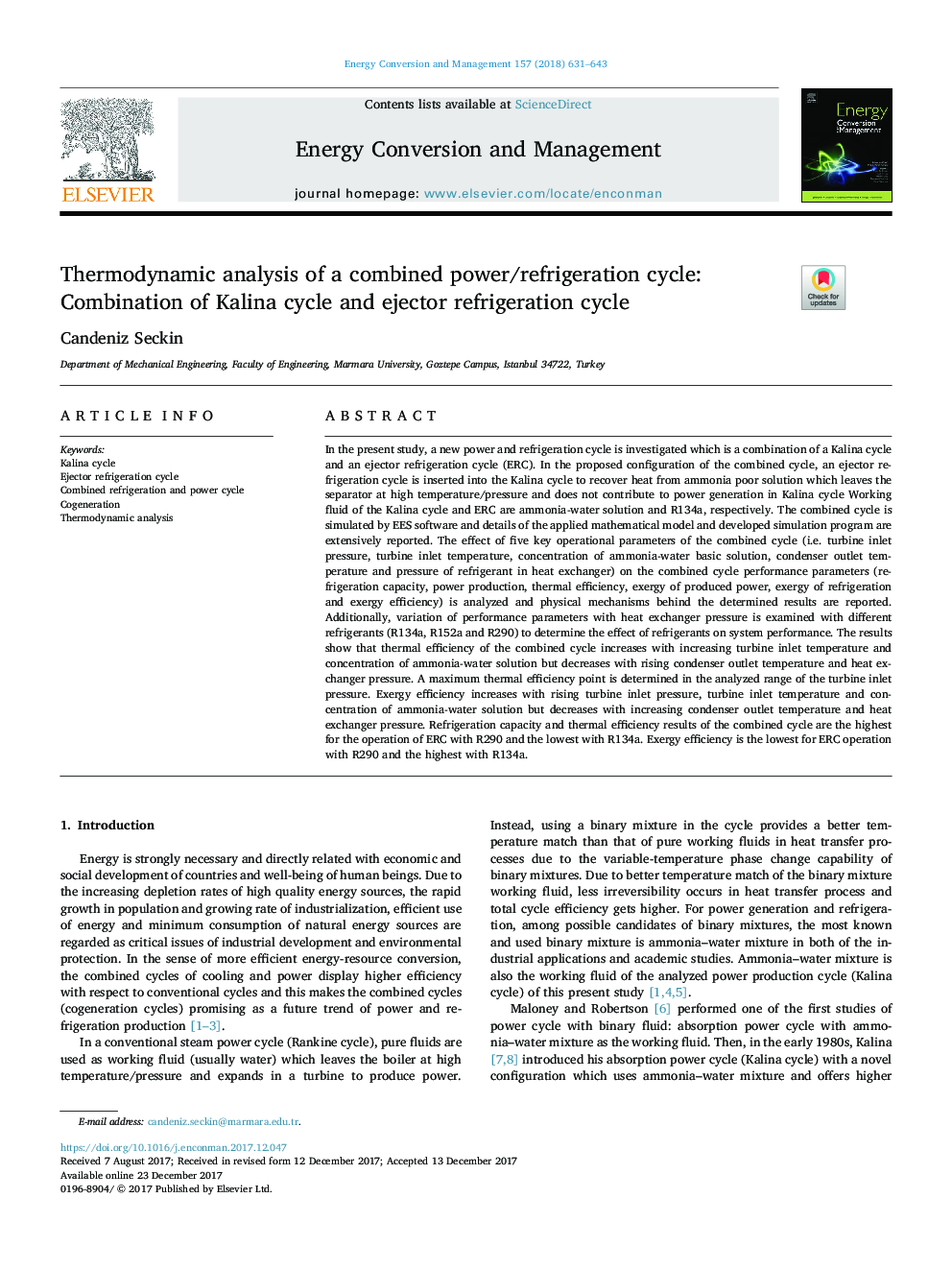| کد مقاله | کد نشریه | سال انتشار | مقاله انگلیسی | نسخه تمام متن |
|---|---|---|---|---|
| 7159261 | 1462805 | 2018 | 13 صفحه PDF | دانلود رایگان |
عنوان انگلیسی مقاله ISI
Thermodynamic analysis of a combined power/refrigeration cycle: Combination of Kalina cycle and ejector refrigeration cycle
ترجمه فارسی عنوان
تجزیه و تحلیل ترمودینامیکی چرخه ترکیبی قدرت / تبرید: ترکیبی از چرخه کالینا و چرخه تبرید انژکتور
دانلود مقاله + سفارش ترجمه
دانلود مقاله ISI انگلیسی
رایگان برای ایرانیان
کلمات کلیدی
چرخه کالینا، چرخه یخ زدایی، تبرید ترکیبی و چرخه قدرت، همگام سازی، تجزیه و تحلیل ترمودینامیکی،
موضوعات مرتبط
مهندسی و علوم پایه
مهندسی انرژی
انرژی (عمومی)
چکیده انگلیسی
In the present study, a new power and refrigeration cycle is investigated which is a combination of a Kalina cycle and an ejector refrigeration cycle (ERC). In the proposed configuration of the combined cycle, an ejector refrigeration cycle is inserted into the Kalina cycle to recover heat from ammonia poor solution which leaves the separator at high temperature/pressure and does not contribute to power generation in Kalina cycle Working fluid of the Kalina cycle and ERC are ammonia-water solution and R134a, respectively. The combined cycle is simulated by EES software and details of the applied mathematical model and developed simulation program are extensively reported. The effect of five key operational parameters of the combined cycle (i.e. turbine inlet pressure, turbine inlet temperature, concentration of ammonia-water basic solution, condenser outlet temperature and pressure of refrigerant in heat exchanger) on the combined cycle performance parameters (refrigeration capacity, power production, thermal efficiency, exergy of produced power, exergy of refrigeration and exergy efficiency) is analyzed and physical mechanisms behind the determined results are reported. Additionally, variation of performance parameters with heat exchanger pressure is examined with different refrigerants (R134a, R152a and R290) to determine the effect of refrigerants on system performance. The results show that thermal efficiency of the combined cycle increases with increasing turbine inlet temperature and concentration of ammonia-water solution but decreases with rising condenser outlet temperature and heat exchanger pressure. A maximum thermal efficiency point is determined in the analyzed range of the turbine inlet pressure. Exergy efficiency increases with rising turbine inlet pressure, turbine inlet temperature and concentration of ammonia-water solution but decreases with increasing condenser outlet temperature and heat exchanger pressure. Refrigeration capacity and thermal efficiency results of the combined cycle are the highest for the operation of ERC with R290 and the lowest with R134a. Exergy efficiency is the lowest for ERC operation with R290 and the highest with R134a.
ناشر
Database: Elsevier - ScienceDirect (ساینس دایرکت)
Journal: Energy Conversion and Management - Volume 157, 1 February 2018, Pages 631-643
Journal: Energy Conversion and Management - Volume 157, 1 February 2018, Pages 631-643
نویسندگان
Candeniz Seckin,
